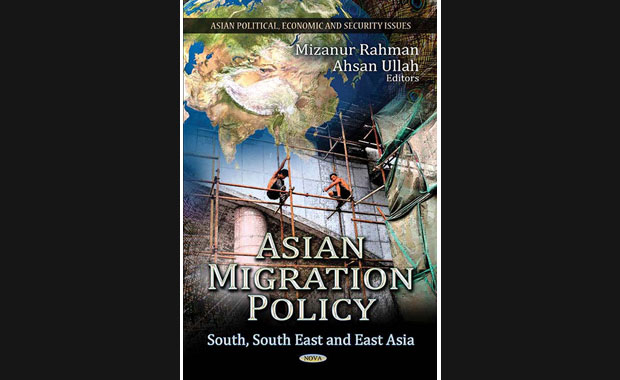INCREASED MIGRATION
Book:?Asian Migration Policy
Editors: Mizanur Rahman & Ahsan Ullah
Publisher:?Nova Publishers
The size of population migrating either voluntarily or under duress across international borders has been growing rapidly. The growth of international migration has been facilitated by many factors. However, policy measures have definitely been playing an important part in shaping its global scope and pattern. Therefore, the policy framework rendered by respective governments and migration regimes largely determines the scope, volume and direction of international migration. While an emerging body of literature has begun to explore migration policies of nation-states, they are often found to be limited in its scope to policies of individual receiving states. Therefore, regional patterns in such policies remained essentially deficient. Also, what most of the study of migration policy concentrates on is the experience of Western developed countries. This has been manifested by the fact that migration policy was placed in two separate boxes which provided a clear rift between them (i) immigration regulation (the rules and procedures governing the selection and admission of foreigners), and (ii) immigrant policy, namely, the conditions provided to resident immigrants (e.g. work and housing conditions, welfare provisions, and educational opportunities) in their enforcement on the ground (Hammar, 1985:7-9; Meyers, 2000:1246). Some scholars however place three aspects of migration policy into context: (i) the regulation of immigration flows, i.e., immigration control; (ii) the management of ethnic relations and the integration of minorities living the host country; and (iii) antiracism and anti-discrimination policies (Giugni and Passy, 2006:I).
The migration policy in Asia is still an evolving phenomenon, lacking policy framework for what Hammar (1985) and Meyers (2000) call, ‘immigrant policy’, and Giugni and Passy (2006) call, ‘management of ethnic relations’ and ‘antiracism and anti-discrimination policies’. Therefore, admission and selections of permanent immigrants, temporary migrants, and refugees, and restriction of irregular migration in major sending and receiving countries in South, Southeast and East Asia. In particular, this volume attempts to advance our knowledge about migration policy in Asia into two realms: (i) the present status of emigration and immigration policy and its outcomes in a number of countries in Asia and (ii) areas of similarities and dissimilarities in migration policy and what explains the similarities or dissimilarities in Asian countries. This book addresses both the policymaking process and the means and efficacy of implementing it in the context of South, Southeast and East Asia.











Comments.